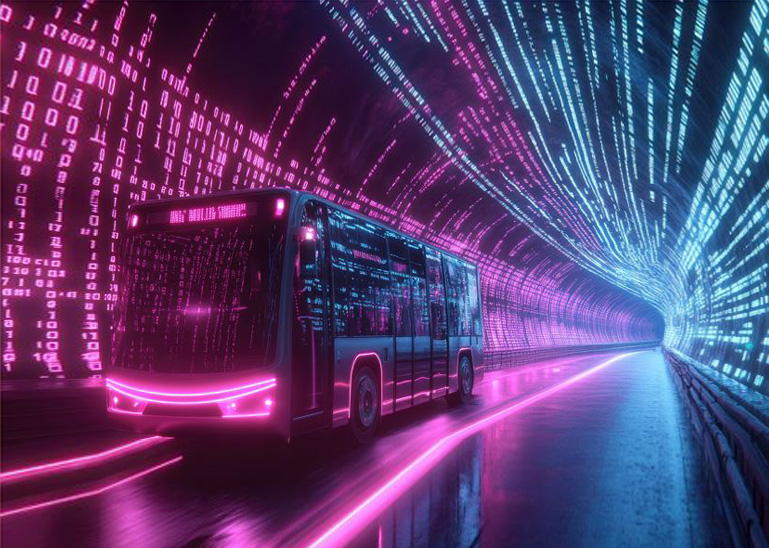In the second half of the twentieth century Spain’s major cities, and in particular its capital Madrid, had experienced considerable population growth, caused among other reasons by the country’s internal migration from the peripheral areas to the capital. These new city dwellers aspired to the better education and employment opportunities included in the Development Plans that had been implemented from the 1960s onwards. This growth resulted in urban saturation, so from the 1970s onwards work started on the ring road now known as the M-30, built to facilitate traffic. At the same time many of the suburbs in the outer area of that ring were built and quickly inhabited.

Aware of the traffic problems caused by this situation, the City Council chiefs undertook to come up with solutions right from the start, looking for the most cutting-edge technology capable of responding to their needs. The Council’s Traffic and Transport office coordinated the implementation of solutions to regulate traffic in Madrid, enlisting the help of SICE from the outset.
In this way, as early as 1983, Madrid saw the installation of the first solutions that put the city at the forefront of urban traffic management, using zone stations and traffic light regulators based on microprocessors that already included control software for a more dynamic and effective way of customising solutions at each intersection. The City Council’s willingness to anticipate the needs of the citizens and provide answers gave SICE leeway from the 1980s onwards to come up with and propose technological solutions produced by the company’s development team to improve the regulation of urban traffic.

It was at this time that the City Council called the tender for the so-called “Plan Recta” (“Straight Ahead Plan”), the project to expand and improve the Traffic Light Regulation Network for Urban Traffic. The aim was to centralise traffic light regulation in the city area, and subsequently extend this to other outlying districts. SICE was the successful bidder for this tender, which was undertaken in phases up until the mid-1990s.
In parallel, Madrid City Council created and headed the activities of a technical committee to establish a communications regulation to be applied in common to traffic light regulators installed in the city. Together with other companies in the sector, SICE was part of this committee as a consulting company. The committee’s meetings gave rise to a document published in 1990, and which four years later was taken as a reference to design traffic control centralisation for the city.
But SICE did not only install its technology in Madrid: by the end of the 20th century, the company was a leader in the urban traffic sector, installing traffic management systems in more than half of Spain’s provincial capitals and other major cities. Working in urban traffic management outside the context of Spanish was very difficult to begin with. Different customs related to highly varied use of urban space complicated the proper implementation of traffic light systems. The key to success: the ability to adapt and customise products and systems, one of the characteristics that have always defined SICE.
The key to success: the ability to adapt and customise products and systems, one of the characteristics that have always defined SICE.
Centralised urban traffic management systems, which came to prominence in the 1980s and 1990s, focused on decongesting city streets and thoroughfares of private motor vehicles, applying procedures, algorithms and various technologies to enable vehicles to move relatively smoothly within the city. This perspective has gradually changed over the years, especially since the beginning of the 21st century, when all stakeholders realised that what we commonly call “traffic jams” were a problem, but we were adopting the wrong approach to it. The solution was not to give higher priority to the vehicle, focusing efforts on keeping them moving more smoothly, but to increase the priority of the main actor: citizens.
SICE has evolved its urban traffic management system over the years, not only to incorporate the latest technology available, but also in response to the needs of users. To this end, the company has for decades had a Traffic Engineering Team, which extracts, processes, shapes, interprets and manages all the data collected and is capable of processing and interpreting them, drawing conclusions that lead to specific actions to be implemented at intersections for proper traffic management, always maintaining an overview of the city.

In addition, since the beginning of the 21st century a new constraint has emerged: air and noise pollution in cities, with the consequent concept of “traffic restriction”, the precursor of today’s “Low Emission Zones” (LEZs).
The number of actors involved in mobility has progressively increased: not only private vehicles, but also public transport and micro-mobility. And personal mobility vehicles can indeed offer a solution to some of the problems in cities (they take up little space, move more slowly and in general cause not pollution). But the consequence is clear: the data open to management and processing are also growing. And it is essential to continue to ensure the safety of all actors by defining a new scale of priorities in mobility management. New challenges, for a new century.





